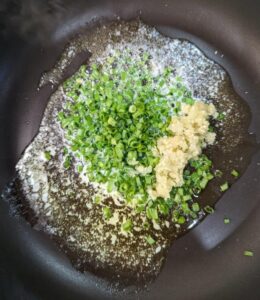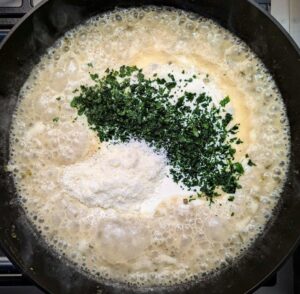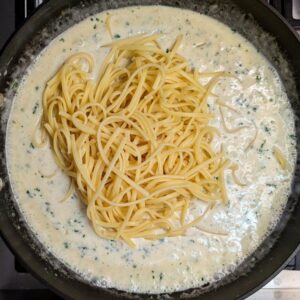
The recipe calls for a cup of dry white wine, so naturally the rest of the bottle is a sure choice to pair with your meal. I recommend a dry Chardonnay (not too fruity).
Other varieties you could use are Marsanne, Viognier, a Rousanne blend (like a VMR or white Côtes de Rhône), or a Semillon with some age (as the younger ones are likely too fruity for this dish).







 2. Add the wine. Once it starts simmering (turn the heat up if needed), add the mussels and put a lid on the pan. Steam the mussels for
2. Add the wine. Once it starts simmering (turn the heat up if needed), add the mussels and put a lid on the pan. Steam the mussels for 



